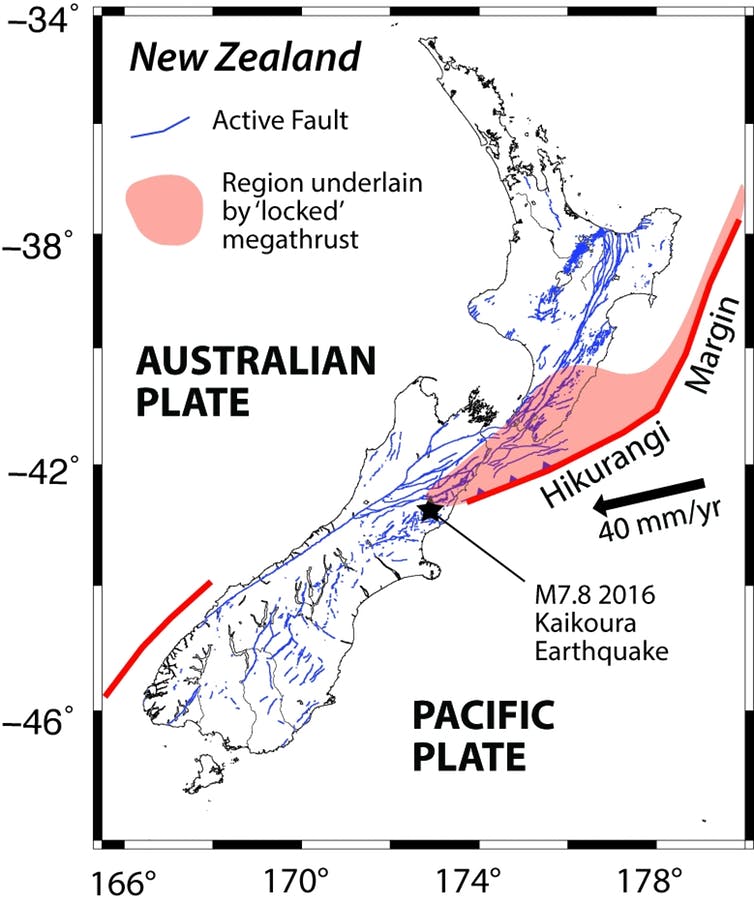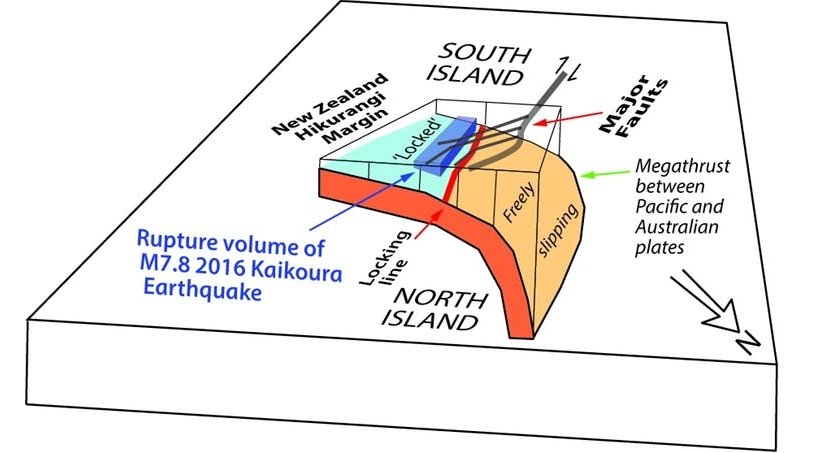Analysis of the events leading up to the 2016 Kaikōura Earthquake, may lead to a different approach to forecasting earthquakes, according to new research published today in Nature Geoscience.

Traditionally, earthquake forecasting has been based solely on the history of individual faults, but this assumption was shattered in the 2016 Kaikōura earthquake, says study author Victoria University of Wellington geophysicist Associate Professor Simon Lamb, as instead of ripping along a single fault line, the earthquake jumped from fault to fault, rupturing in several places at once.
“The Kaikōura earthquake initiated a complex pattern of fault movement, essentially shattering the landscape, and causing a cascade of earthquakes on 20 or more faults,” Prof Lamb told Newshub.
He suggests that in most cases, earthquakes are triggered by quakes on other faults, as each quake releases stress from one spot, but puts more strain somewhere else.
In the case of the Kaikōura quake, they found that the ‘megathrust’ (the large fault between the Australian and Pacific tectonic plates), was locked in some places, but slowly moving in others.
He told Stuff.co.nz: “We found if you look at the zone of rupturing in the Kaikōura Earthquake, it’s not really related to any particular fault at the surface, but it follows the way that the megathrust has been slipping. The zone that actually broke follows how the megathrust had been moving in the 20 years prior to the earthquake.”
The researchers say the findings may change how we predict future earthquakes. In his own piece on The Conversation, Lamb wrote: “the Herculean task of identifying every fault and its past earthquake history may be of only limited use. In fact, it is becoming clear that earthquake ruptures on individual faults are far from regular. Big faults may never rupture in one go, but bit by bit together with many other faults.”
The study was covered by local media including:
The Conversation: Satellite measurements of slow ground movements may provide a better tool for earthquake forecasting
Stuff.co.nz: Megathrust stress bent central New Zealand ‘like a piece of elastic’ before Kaikōura quake
RNZ: ‘Megathrust’ may help forecast earthquakes – study
Newshub: Megathrust behind ‘shattering’ Kaikōura earthquake – expert
